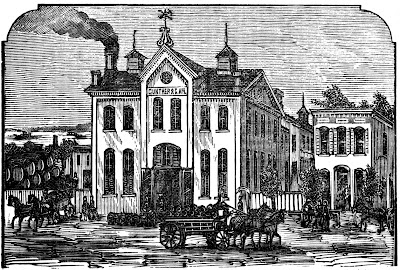
A bi-weekly, non-comprehensive roundup
of news of beer and other things.
Weeks 28/29
7 July - 19 July 2014
- 18 July 2014
Malaysia Airlines plane crashes in eastern Ukraine, killing 298. U.S. intelligence blames missile, fired from rebel-held region of Ukraine.
—Via Washington Post.
- 17 July 2014
Elaine Stritch was one of Broadway's 'Grande Dames.' She has died at age 89.
—Via Washington Post.
- 16 July 2014
In 2013, hops were planted in 39,000 acres in Pacific Northwest, and in 880 acres elsewhere in the U.S. The 2013-2014 Barth Report (a major hop merchant )shows that "crop year 2012 finally marked the end of the structural supply surplus of hops and alpha acid in the hop market; in other words, supply and demand are becoming increasingly evenly balanced, although demand for certain varieties may exceed supply. Planting of aroma/flavor varieties is on the increase worldwide, more than compensating for the clearance of bitter/high alpha varieties."
—Via Stan Hieronymus at Appellation Beer.
- 15 July 2014
"One half of the book is disposable; the other is indispensable." Jeff Alworth, of Beervana, reviews "The Craft Beer Revolution", a business memoir and history of American 'craft' beer, by Steve Hindy, co-founder of Brooklyn Brewery.
—Via Beervana.
- 14 July 2014
The Washington, D.C. City Council passes a law allowing production breweries to sell pints at tasting rooms. [Similar to the Maryland 2013 bill and Virginia bill in 2012.]
—Via Washington Business Journal.
- 14 July 2014
Brewers Association asks 'craft' brewers for their "10 Bucket List Beer Bars." [Clarendon, Virginia's Galaxy Hut selected as one.]
—Via Craft Beer.
- 14 July 2014
A “spoke of the tropospheric circumpolar vortex” cools the U.S. midwest and east coast. Used to be called a "Canadian air mass," or, simply "cooler weather."
—Via Capital Weather Gang.
- 14 July 2014
Cave-aged? No! Belgian lambic brewery Cantillon is maturing some its barrels in a World War II bomb shelter in Brussels.
—Via Chuck Cook "Belgian Beer Specialist" (in USA Today).
- 14 July 2014
A date which lives in foolishness. The National Minimum Drinking Age Act was passed by the Unites States Congress, 30 years ago, 14 July 1984.
—Via Wikipedia.
- 14 July 2014
Is a merger of liquor-and-beer importer and manfacturer Diageo ($80.4 billion) with brewing conglomerate SABMiller ($52.6 billion) in the works?
—Via The Street.
- 13 July 2014
Pioneering jazz bassist and bandleader Charlie Haden has died at age 77. "I want to sound like a rain forest."
—Via Daily Kos and Billboard.
- 11 July 2014
Not an ESOP fable. Harpoon Brewery to become employee-owned, as co-founder Rich Doyle steps down as CEO, and 48% of stock sold to employees.
—Via Harpoon Brewery.
- 11 July 2014
"Via a thin needle inserted through the foil capsule and the cork, Coravin extracts wine from the bottle, replacing it with inert argon gas to protect the remaining wine. Theoretically, a bottle could last indefinitely." Some wine bottles have exploded upon use of Coravin, which has determined that the bottles either were defective or had been damaged previously. Company has shipped Neoprene sleeves to protect bottles while wine is being extracted. Winesearcher said of remedy: “A giant bottle ‘condom’ is all Coravin needs to be safe.”
—Via Dave McIntyre (Washington Post).
- 09 July 2014
A 6-reason listical on why to ignore wine ratings.- Points Don't Describe Wine
- Points Make You Miss Great Bottles
- Points Are Routinely Misused
- Points Aren't Forever
- Critics Retract Points
- A Knowledgeable Merchant Is Always A Better Substitute For Points
Why do 'craft' breweries charge so much for their limited runs? Because, like boutique wineries, they can.
—Via Boak and Bailey.
Louis Zamperini, Olympic long-distance runner, who, during WWII, survived 47 days on a raft in the Pacific after being shot down, and, after being rescued, two years as a Japanese POW during WWII, has died at age 97.
—Via Washington Post.
Compuserve was shut down five years ago, ending a a 35-year span as the first major online service.
—Via Boing Boing.
Anheuser-Busch InBev buys brewery Pivovar Samson in the Czech Republic town of Ceske Budejovice (Budweis, in German). Was the purchase a bid for the EU rights to the appellation of 'Budweis'-er?
—Via Bloomberg.
After its sale to Constellation Brands, is Corona running out of glass bottles for its beer? Owner Constellation says no, but analysts wonder.
—Via Just Drinks.
-----more-----









.png)


















